Author: Andy Carter
When plant material dies in a wetland environment with acidic and anaerobic conditions, decomposition is hindered and a spongy material called peat is formed. Historically, peat was used as a source of fuel in certain regions, such Scotland and Ireland, due to its ability to burn hot and long. Naturally, early maltsters relied on this heat source as a means of firing their kilns, which resulted in the malt taking on a unique smoky character that became common in certain spirits and some beers.
Since modern malt houses no longer require the use of peat as fuel, they typically leave malted barley over smoking peat to produce a product of similar character, and opinions on peat smoked malt vary greatly. Peated malt is known to impart a noticeably strong smokiness to beer, hence those who choose to use it often do so at rather low rates. One common turn of phrase that applies here is, “if you can taste the spice, it is overspiced.” Indeed, peat smoked malt is an ingredient that seems to have far more detractors than it does zealots.
In a recent conversation about darker beer styles with some professional brewers, one mentioned they like to include a very small amount of peated malt in the grain bill, around 1% total. While this purportedly imparts no perceptible smokiness to the beer, the brewer said it added a hint of “something” they felt amplifies the character of Porter and Stout. As I discussed this concept with other homebrewers, I learned my pro brewer friend wasn’t alone and was fascinated to try it out for myself!
| PURPOSE |
To evaluate the differences between an American Porter made with a small amount of peated malt and one made without peated malt.
| METHODS |
For this xBmt, I went with a spin on an American Porter recipe I’ve had good luck with in the past.
Soupçon Fumé
Recipe Details
| Batch Size | Boil Time | IBU | SRM | Est. OG | Est. FG | ABV |
|---|---|---|---|---|---|---|
| 5.8 gal | 60 min | 29.8 | 39.1 SRM | 1.061 | 1.012 | 6.43 % |
| Actuals | 1.061 | 1.012 | 6.43 % | |||
Fermentables
| Name | Amount | % |
|---|---|---|
| Pale Ale Malt 2-Row | 5 lbs | 40.2 |
| Pilsen Malt | 5 lbs | 40.2 |
| Chocolate | 1.25 lbs | 10.05 |
| Caramel Malt 60L | 1 lbs | 8.04 |
| Peated Malt | 3 oz | 1.51 |
Hops
| Name | Amount | Time | Use | Form | Alpha % |
|---|---|---|---|---|---|
| Northern Brewer | 21 g | 60 min | Boil | Pellet | 8.8 |
| Northern Brewer | 14 g | 30 min | Boil | Pellet | 8.8 |
Yeast
| Name | Lab | Attenuation | Temperature |
|---|---|---|---|
| Independence (A15) | Imperial Yeast | 76% | 32°F - 32°F |
Notes
| Water Profile: Ca 100 | Mg 6 | Na 8 | SO4 82 | Cl 45 |
Download
| Download this recipe's BeerXML file |
A day before brewing, I made a single large yeast starter with 2 pouches of Imperial Yeast A15 Independence.
I started my brew day by adding identical volumes of RO water to separate BrewZilla units then setting the controller to heat it up.
After adding the same amount of minerals to each kettle, I prepared the grains for each batch, swapping out a small portion of pale malt for peated malt in one of the batches.
Once the water for each batch was adequately heated, I incorporated the grains then checked to make sure both were at the same target mash temperature.
While the mashes were resting, I prepared the kettle hop additions.
Once each 60 minute mash was complete, I sparged to collect the same pre-boil volume then boiled the worts with hops added at the times stated in the recipe.
When the 60 minute boils were finished, I chilled the worts on their way to sanitized Delta Brewing FermTanks.
Refractometer readings showed both worts achieved the same target OG
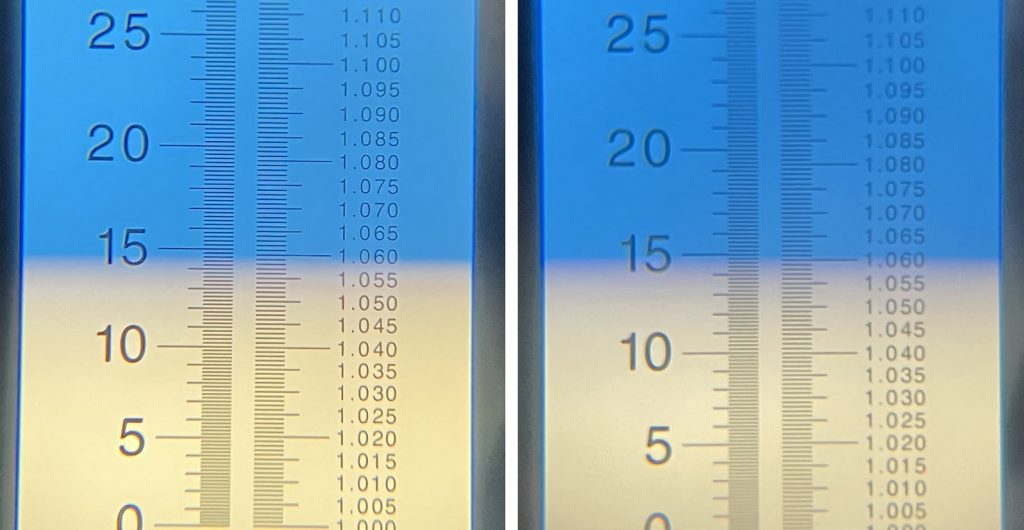
The filled fermenters were placed in my chamber and left to finish chilling to my desired fermentation temperature of 64°F/18°C for a few hours before I evenly split the yeast between them.
After a week, I raised the temperature in the chamber to 70°F/21°C and let it sit for an additional week before taking hydrometer measurements showing the beer made with peated malt finished 0.002 SG points higher than the one made without peated malt.
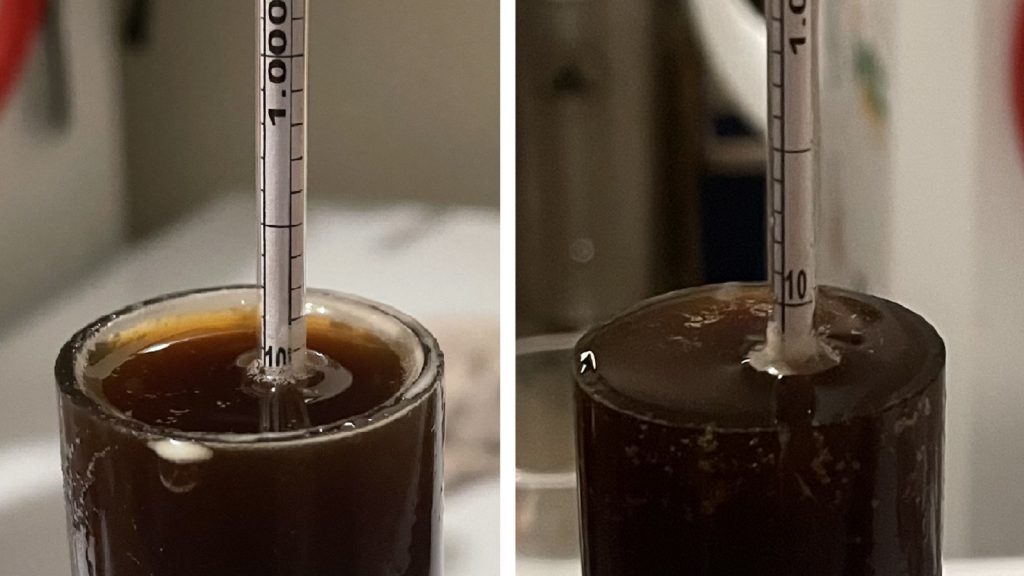
At this point, I pressure-transferred the beers to sanitized kegs.
The filled kegs were placed in my keezer and left on gas for 3 weeks before I began my evaluations.
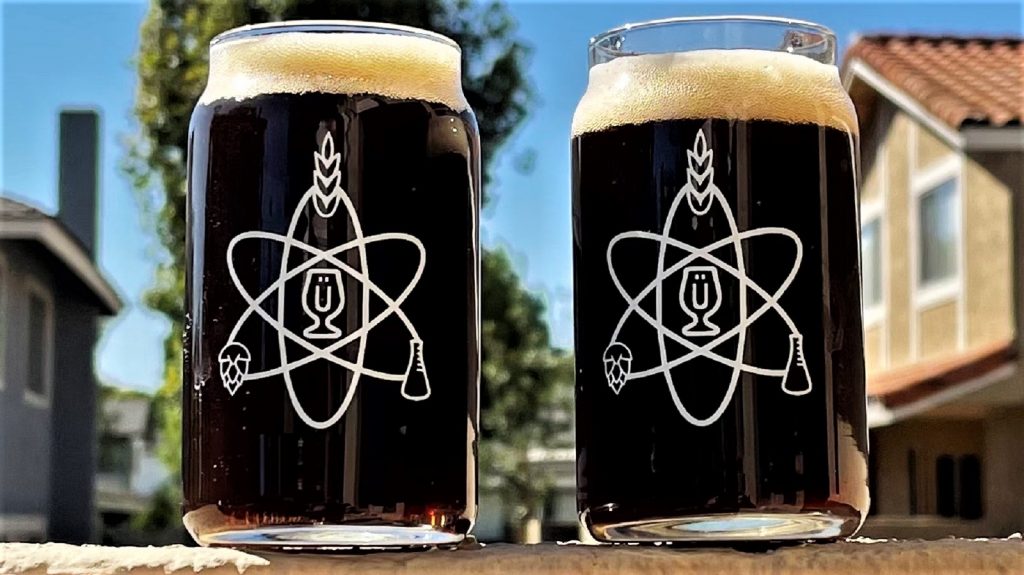
| RESULTS |
Data for this xBmt was collected during monthly Ventura Independent Beer Enthusiasts (VIBE) club meeting.
A total of 19 people of varying levels of experience participated in this xBmt. Each participant was served 2 samples of the beer made with peated malt and 1 sample of the beer made without peated malt in different colored opaque cups then asked to identify the unique sample. While 11 tasters (p<0.05) would have had to accurately identify the unique sample in order to reach statistical significance, only 7 did (p=0.24), indicating participants in this xBmt were unable to reliably distinguish an American Porter made with 1.5% peated malt from one made with no peated malt.
My Impressions:Out of the 5 semi-blind triangle tests I attempted, I correctly identified the unique sample just once, which utterly destroyed my preconceived belief that even a small amount of peated malt would have a perceptible impact. I thoroughly enjoy the complexity of this beer, which was rich with coffee, chocolate, and a pleasant sweetness.
| DISCUSSION |
Smoke, and more specifically phenols, is one of the most sensitive compounds to humans, with evidence indicating some people can detect amounts as low as 10 parts per billion (ppb). While certain styles are expected to pack a smoky punch, many brewers use smoked malt sparingly as a way to layer and amplify flavors, particularly when it comes to peated malt. Interestingly, tasters in this xBmt were unable to reliably distinguish an American Porter made with 1.5% peated malt from one made with no peated malt.
In considering possible explanations for these results, a couple of things come to mind. First, this American Porter recipe was fairly complex with a decent amount of chocolate and Caramel malt, which may have covered up any impact of the peated malt. Second, the amount of peated malt used simply may not have been enough to have a noticeable effect. As true as these notions may be, there exists a number of brewers who swear that using 1-2% peated malt in styles like Porter and Stout imparts desirable characteristics.
I was admittedly biased going into this xBmt and was all but certain the Porter made with peated malt would be easy to detect. The fact neither blind tasters nor I could tell the beers apart seems to suggest that using peated malt in such low proportions may not have the organoleptic effect many believe, which makes me all the more curious to repeat this xBmt in the future using higher amounts.
If you have any thoughts about this xBmt, please do not hesitate to share in the comments section below!
Support Brülosophy In Style!
All designs are available in various colors and sizes on Amazon!
Follow Brülosophy on:
FACEBOOK | TWITTER | INSTAGRAM
If you enjoy this stuff and feel compelled to support Brulosophy.com, please check out the Support page for details on how you can very easily do so. Thanks!


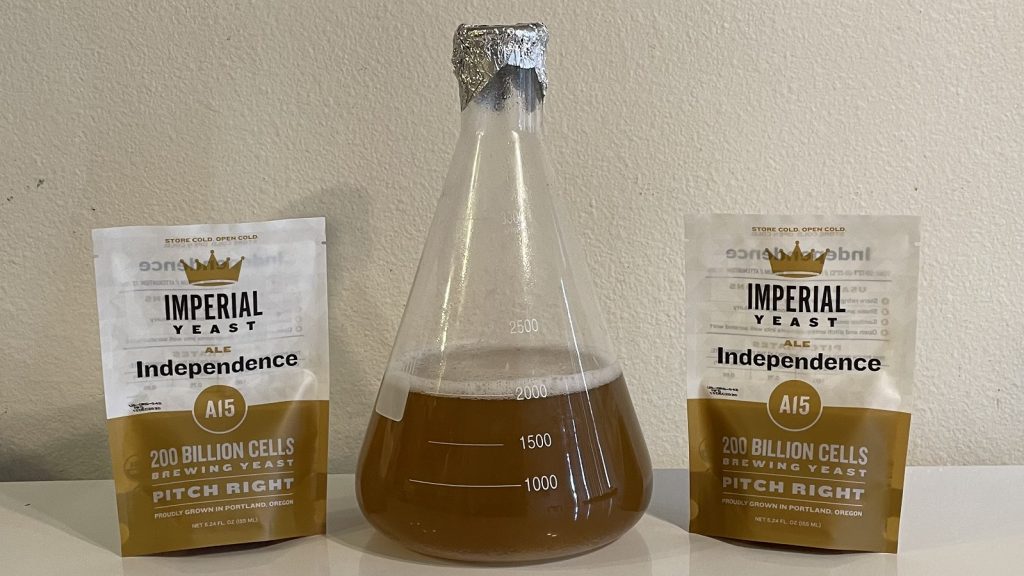
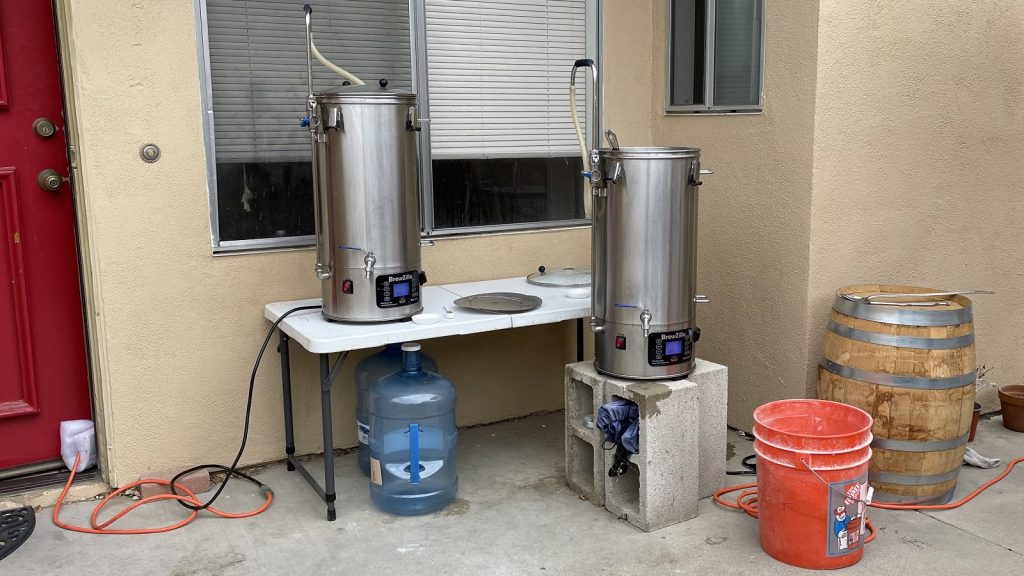
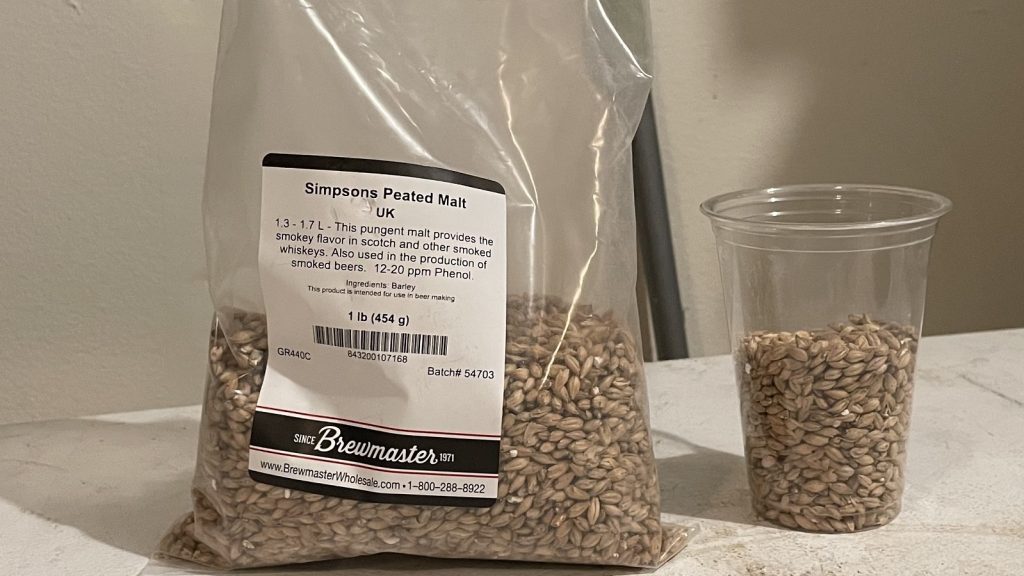
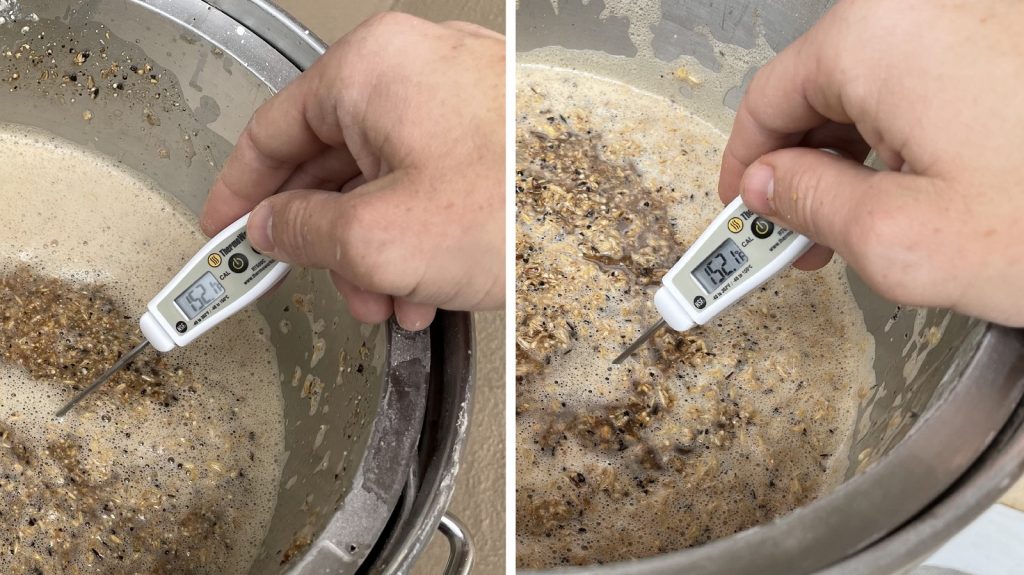
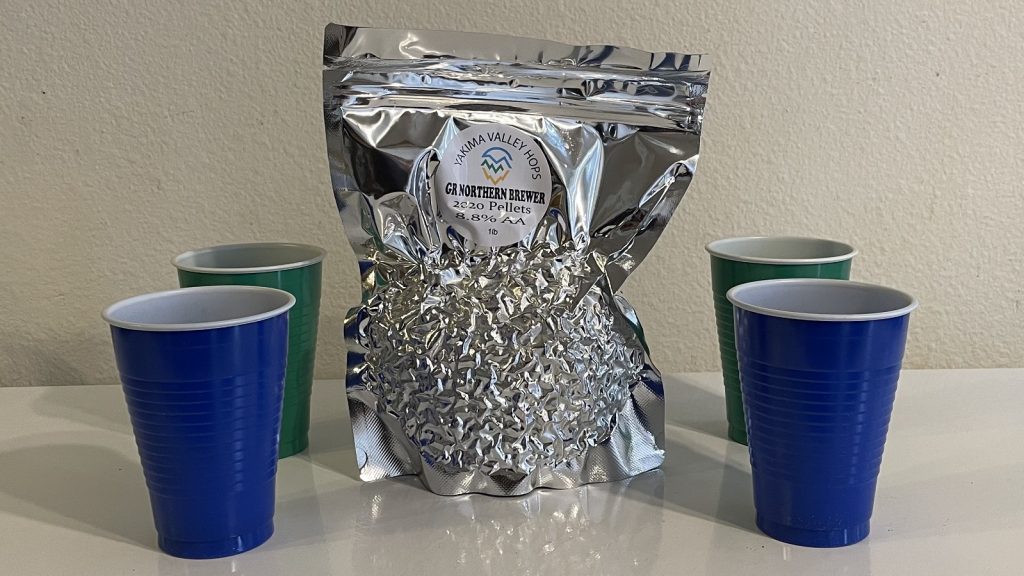
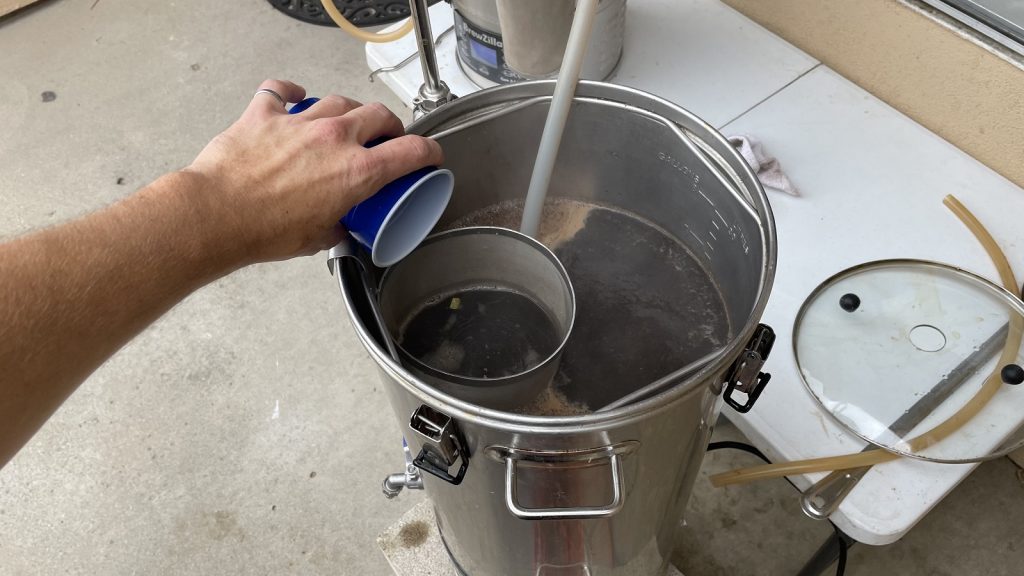
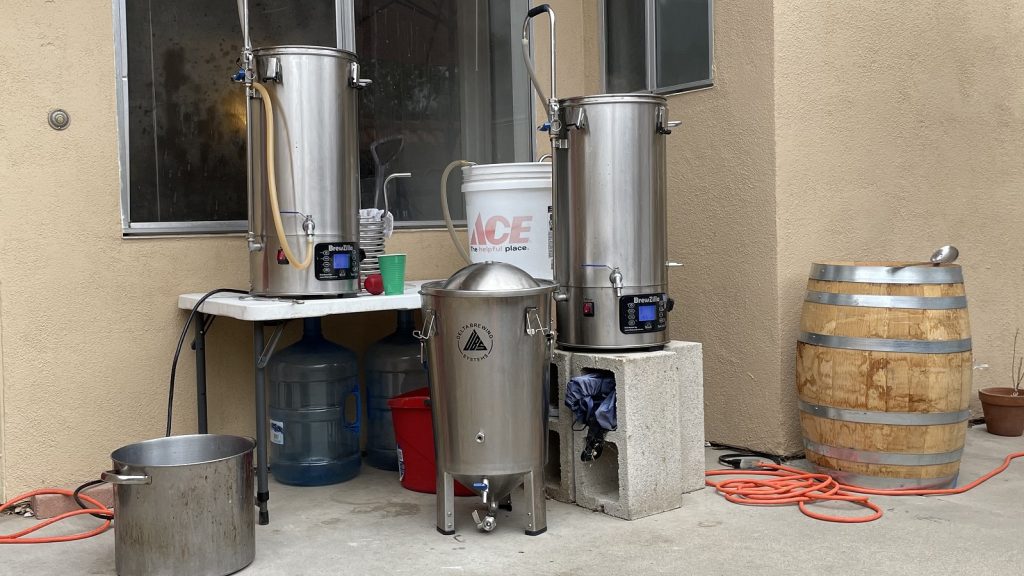
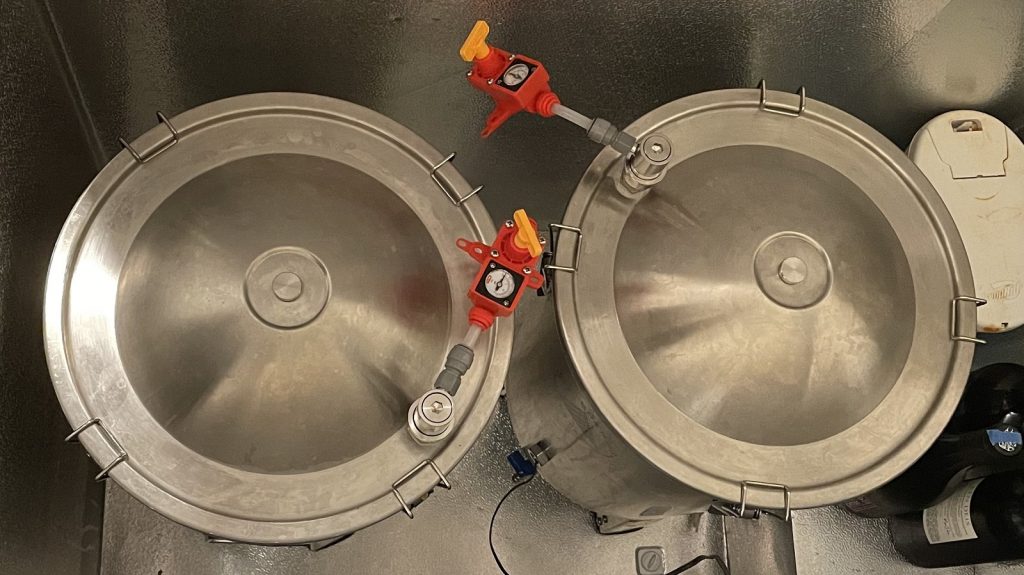
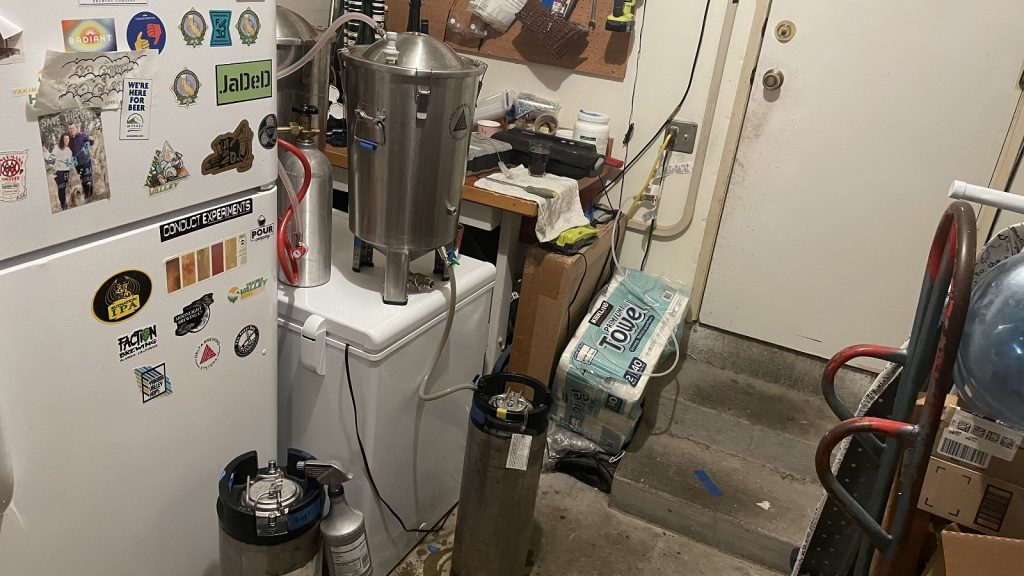












7 thoughts on “exBEERiment | Impact Peated Malt Has On An American Porter”
Interesting exBEERiment! A couple years ago, I made a peated porter with 4oz of peated malt in a 13lb grain bill (1.9%). It seemed notably peaty, and was a big hit with my friends. I hope we weren’t just deceiving ourselves about the smoky flavor.
Can’t wait to see the updated experiment with a higher ratio….
My favorite description of peat-smoked malt flavor was “tastes like death”:)
I honeymooned in Ireland and fell in love with the smell of peat smoke. Funny thing is, I didn’t care for it at first, but after a few days, all that changed. I routinely make a Dry Rye Stout with ~5% peated malt and 10% rye. The stout is robust and even at 5%, the peated malt does not significantly come through, but it does seem to impart a nice earthiness. I think most adjunct grains (e.g. oatmeal, rye, peat/smoked), really need to be about 10% of the grain bill for them be distinctly noticeable (i.e. Rye PA). I have an oatmeal stout fermenting now where the flaked oats are at 13%.
– Cheers
Forget this myth about smoky malts and English beers. Smokiness historically has always been considered a flaw in English beers. You will find this back in Ron Pattinson’s and Martyn Cornell’s historic literature about beer.
I routinely brew a dry rye stout with about 5% peated malt and it is barely noticable. It adds an earthy complexity to the flavor without a noticable smokiness. IMO- You need to get up to about 10% of the grain bill before most adjunct-type grains (e.g. oats, rye, peated/smoked malts) will assert themselves. But, it’s best to work up to that.
First greetings from Brazil, I love your experiments,
I have been testing the use of chateau peated malt and chateau whiskey in my recipes, I have already mashed about 10 in these tests, what I noticed is that the peaty character (wood and ash) appears around 8%, I usually use 10% of mine taste loves it…. I’ve used 20% and it was fantastic, what I noticed is that the Peated doesn’t go very well with the sweetness of the chocolate malt, at least not for my taste, so after some Porters tests I abandoned it and started making it only in Stouts, the toast combined with the coffee combine very well with the wood and smoke that the peaty malt provides.
My tests are still going on, but one thing is for sure! , both chateau peated malt and chateau whiskey work very well, they bring notes of wood that simulates a beer matured in wooden barrels.
P.S. I know what the “literature” says about Peated malt, but for me nothing is definitive and my taste is the one who determines what goes together and works or not, making beer is ancient, it’s infinite and the tests never end!
Cheers!
Emilio Rossi
Instagram: cerveja_overdrive
Brazil